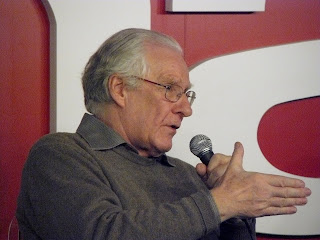Why should
William Morris enthusiasts concern themselves with the work of French
philosopher Alain Badiou, who is eighty years old today? Well, with his more technical philosophical
work, such as his magnum opus Being and Event
(1988), perhaps they needn’t and shouldn’t; it is the kind of foundational and
systematic project that we thought the Derridean moment of French philosophy
had done away with for good, and it can be forbiddingly mathematical too into
the bargain (yet let us recall that Morris put a lover of mathematics, Bob the
weaver, into the early chapters of News
from Nowhere).
But with
Badiou’s political thinking (which is not, after all, in the end divorced from
his philosophy), Morrisians in my view definitely should take a lively interest. For he is the major advocate in our time of
what he terms the ‘communist hypothesis’, and if you regard Morris, at his
strongest, as a communist thinker – ‘I call myself a Communist, and have no
wish to qualify that word by joining any other to it’, he declared in May 1889 –
then there is a nominal continuity here which may be worth exploring. Moreover, since Badiou calls for a
post-Leninist, non-party communism (whatever this might mean), then there may be
more specific parallels with Morris’s own, pre-Leninist, utopian communist
thinking that should be looked at. The
attempt to revive communist thinking today, in people like Badiou and Slavoj Žižek
, may offer an opportunity for making Morris’s work current and suggestive in
new ways.
So ‘joyeaux annniversaire’ to Alain Badiou – may he have many more years of pathbreaking thought and active militancy! And if, in the age of Donald Trump, we seem further than ever from the reinvention of communism as a utopian social goal, then we shall need all the intellectual resources that we can draw on to that end, past and present.









